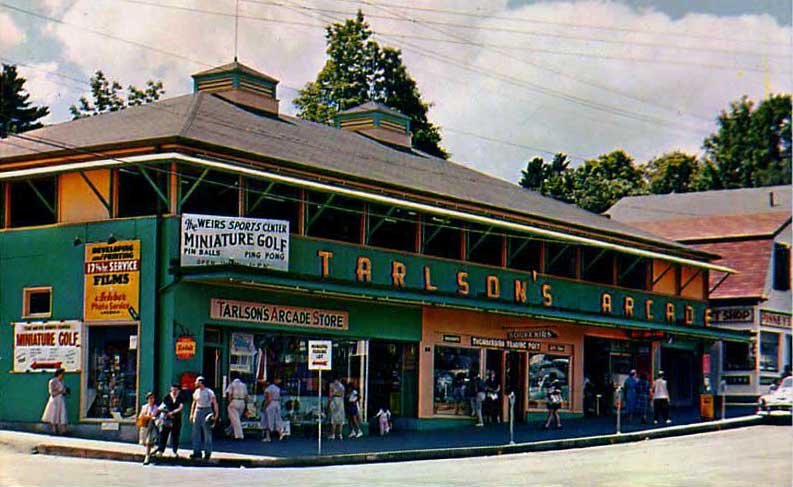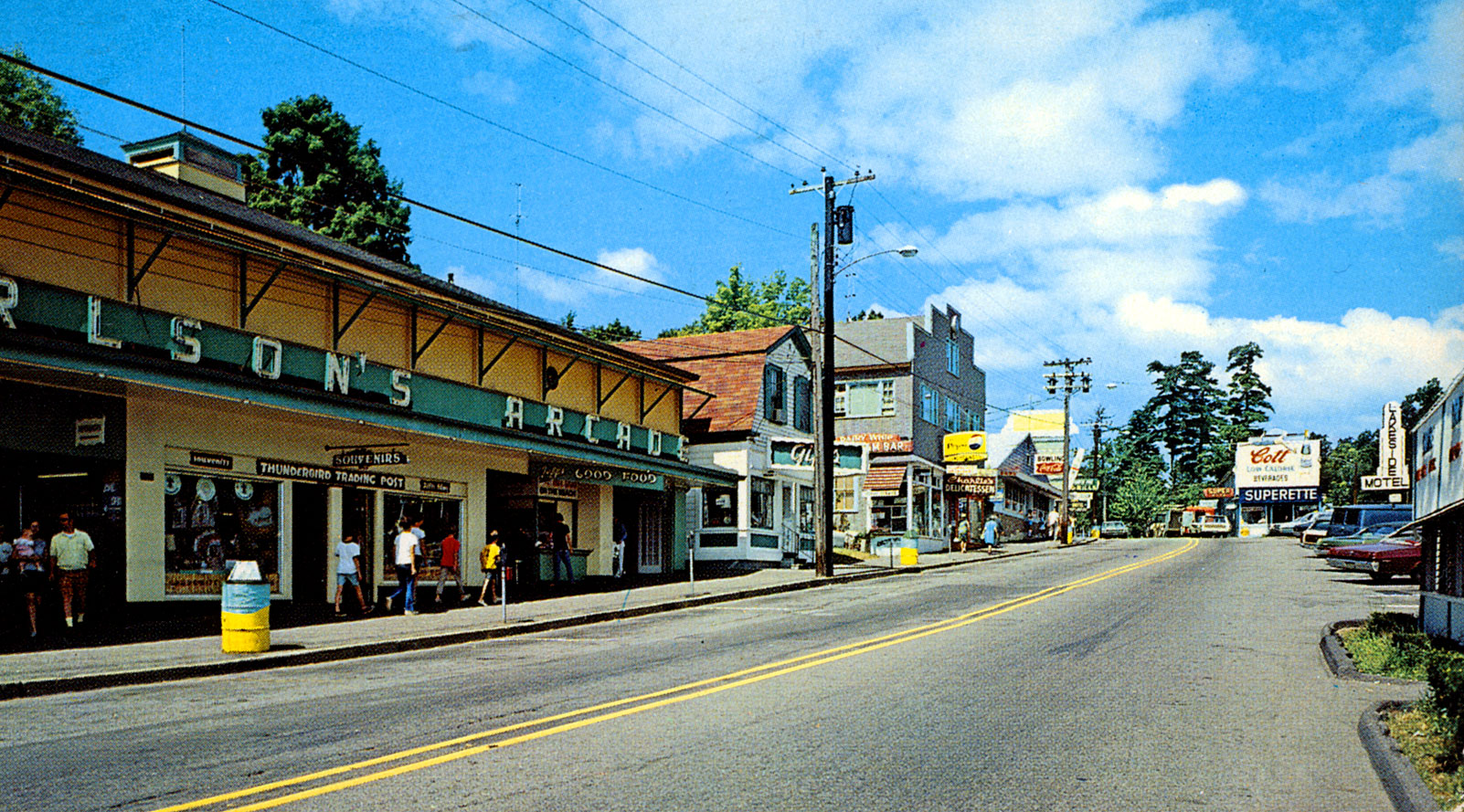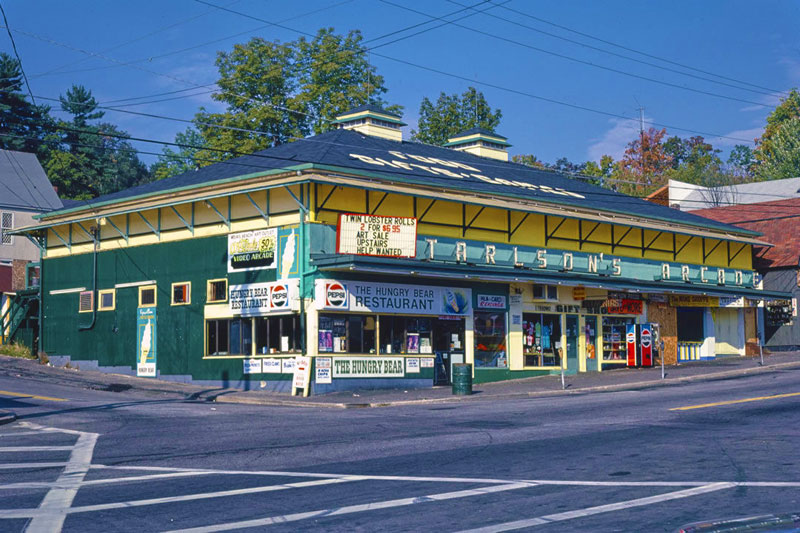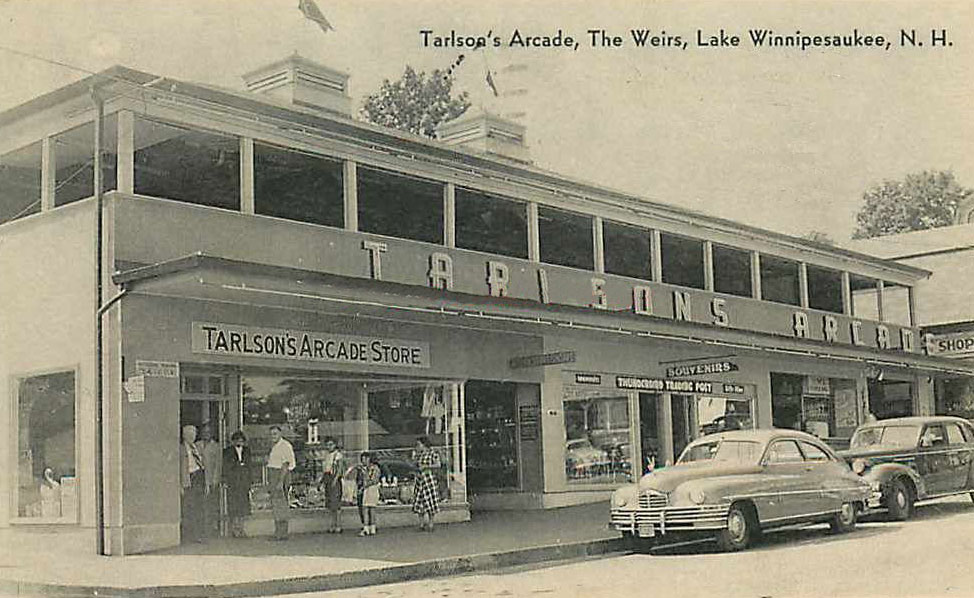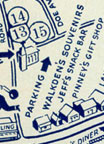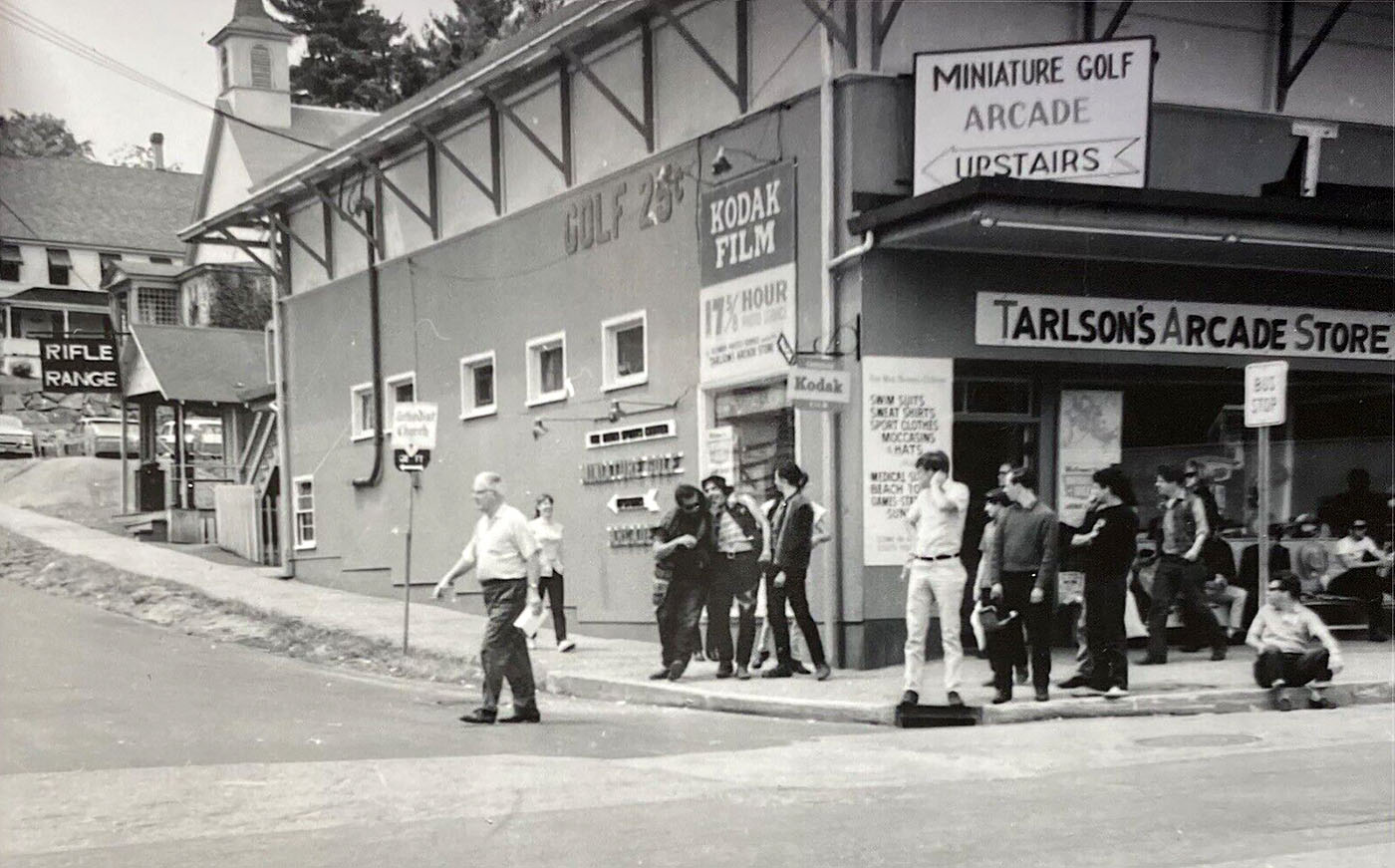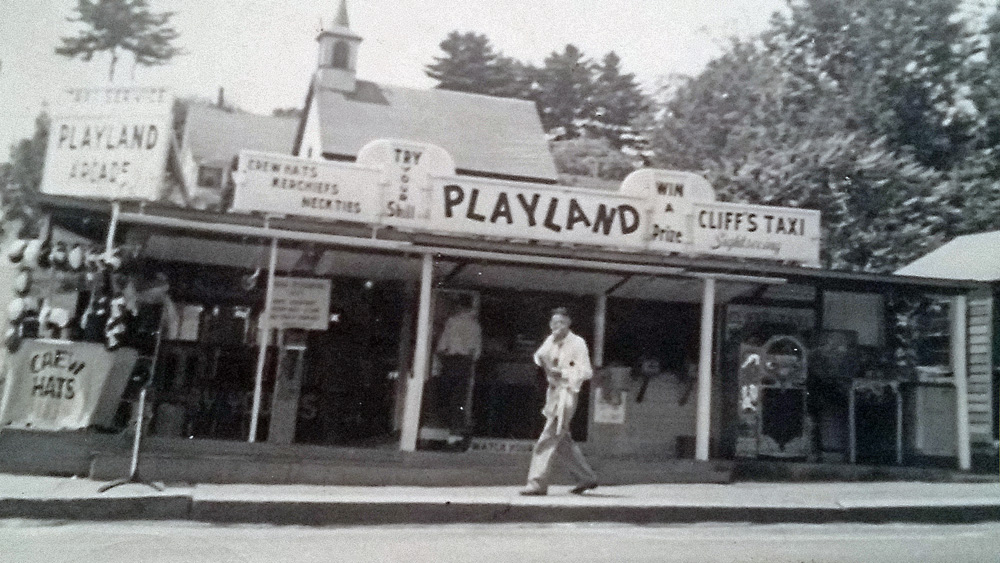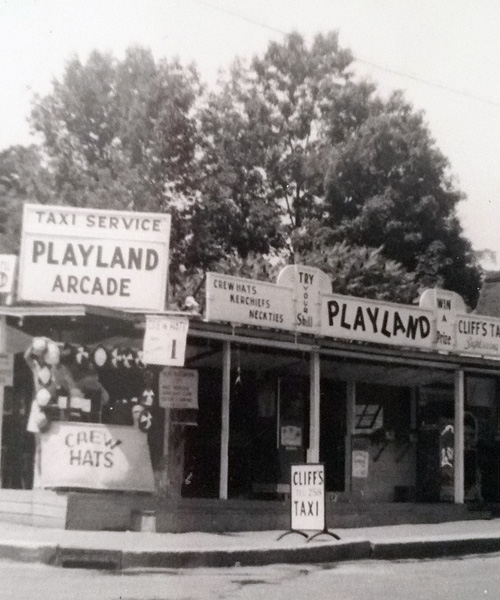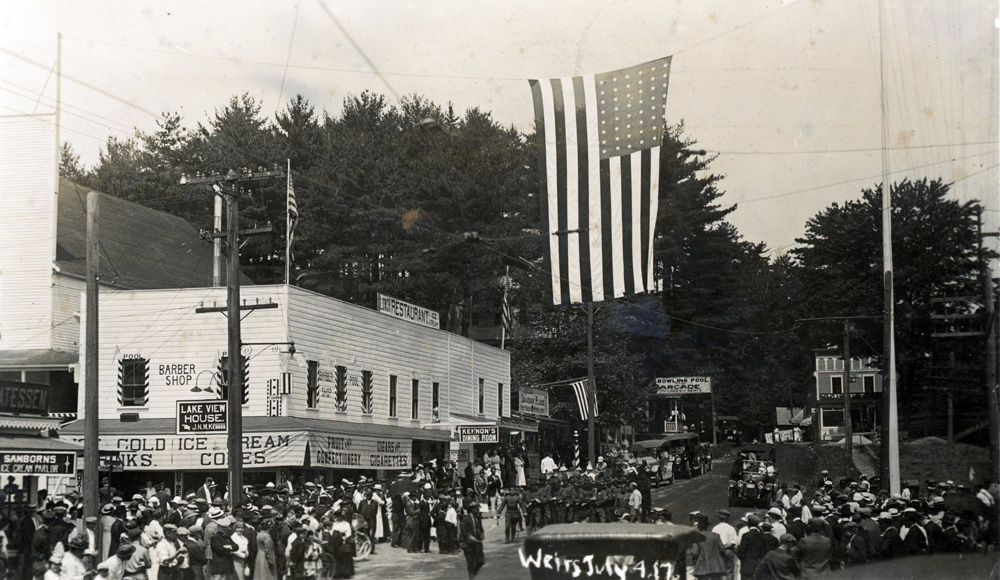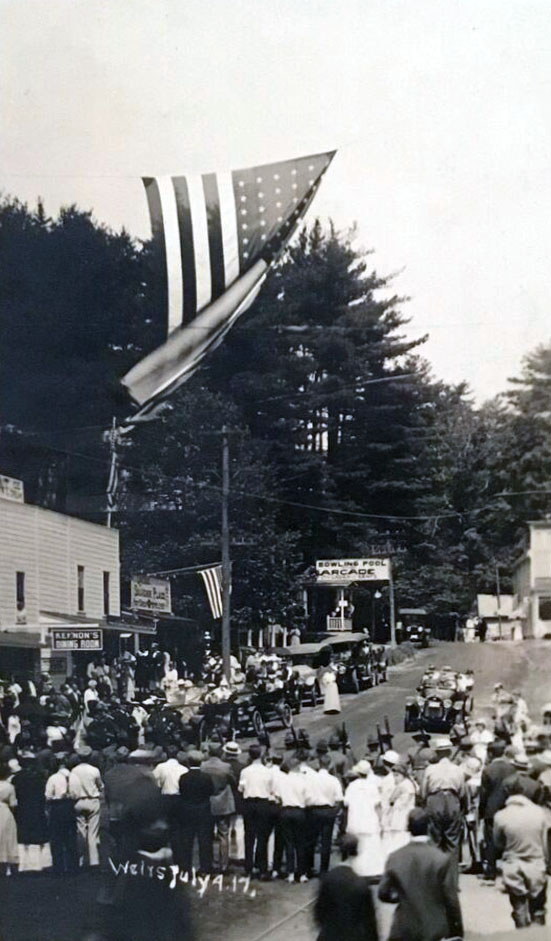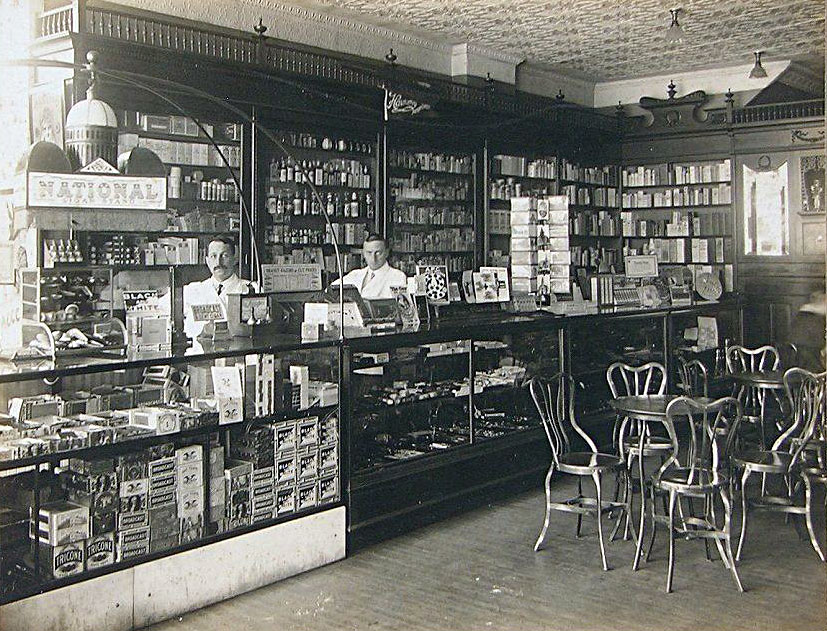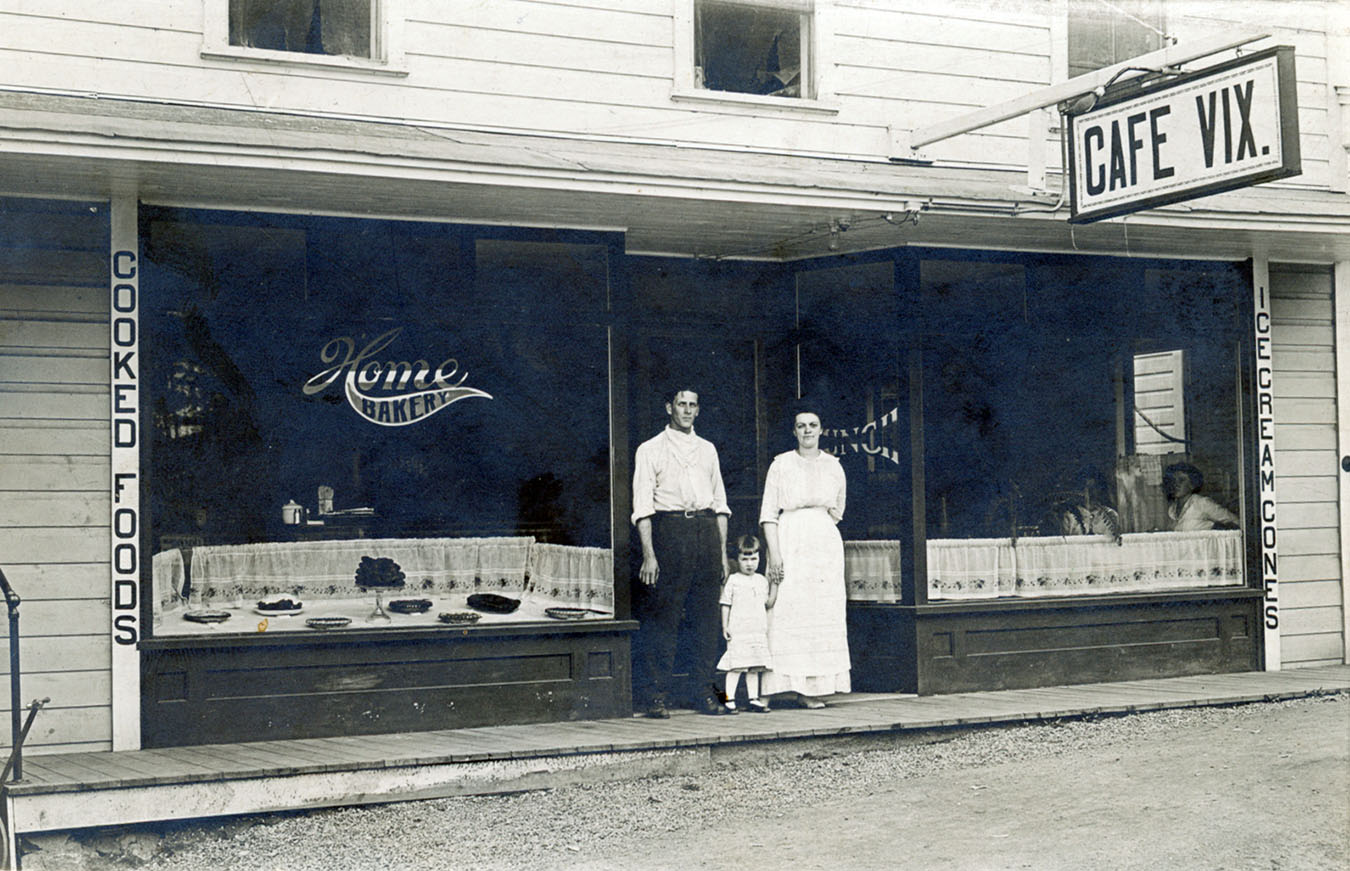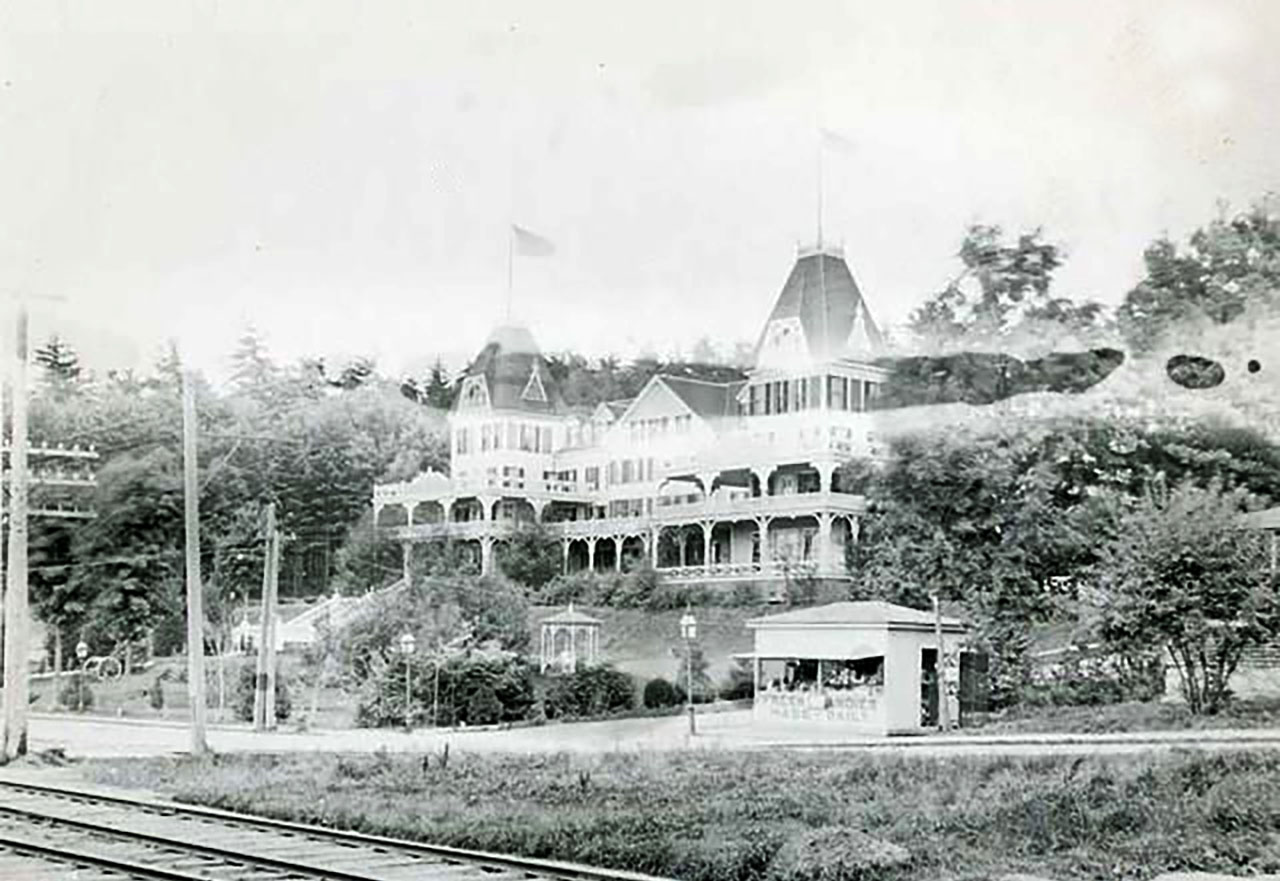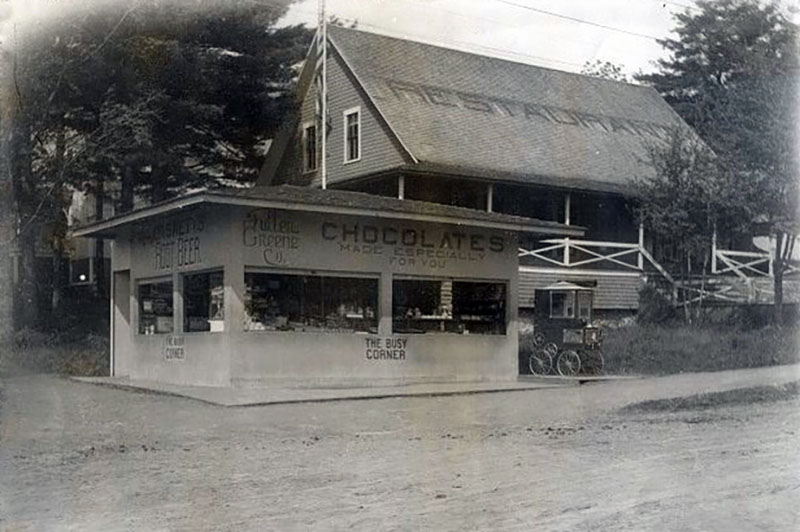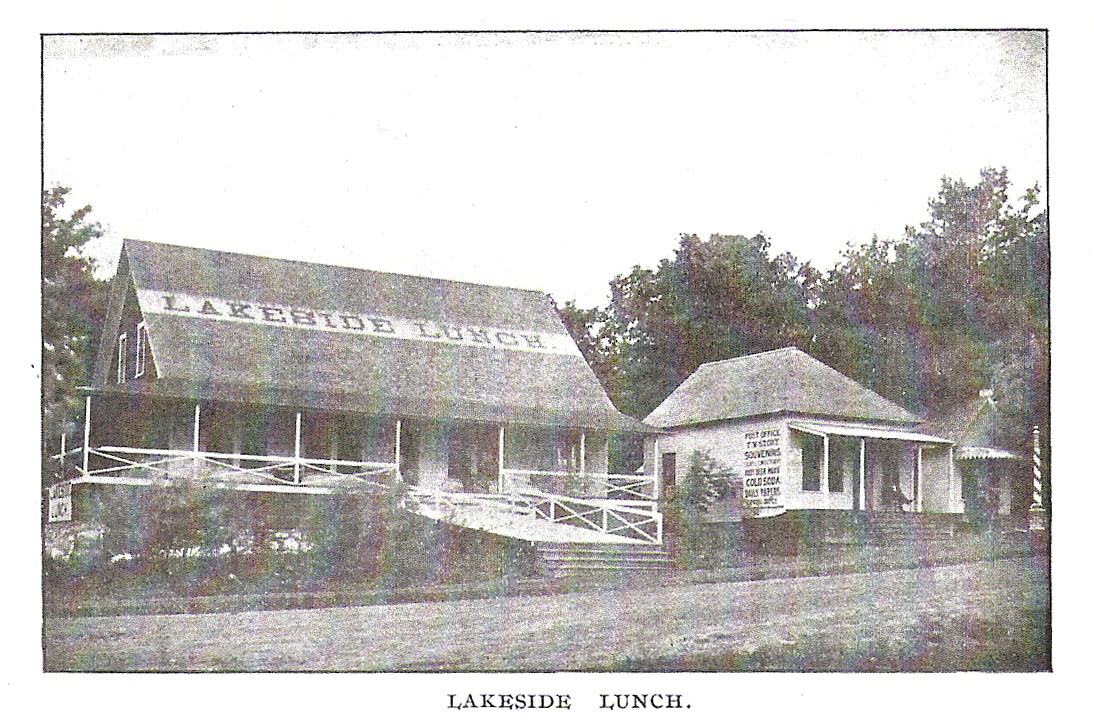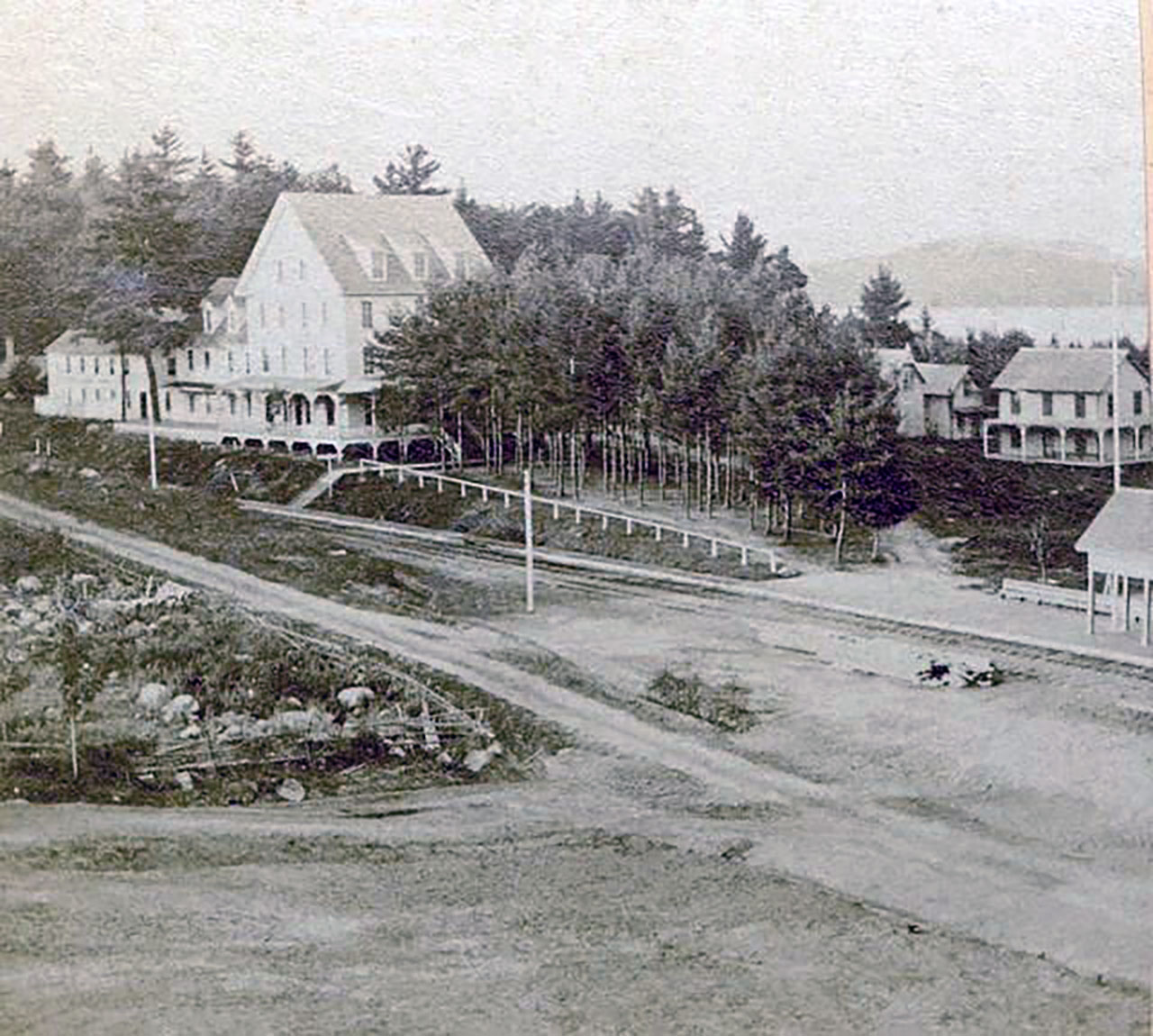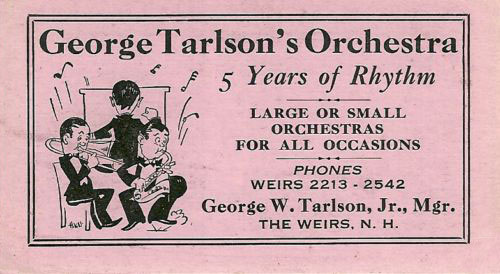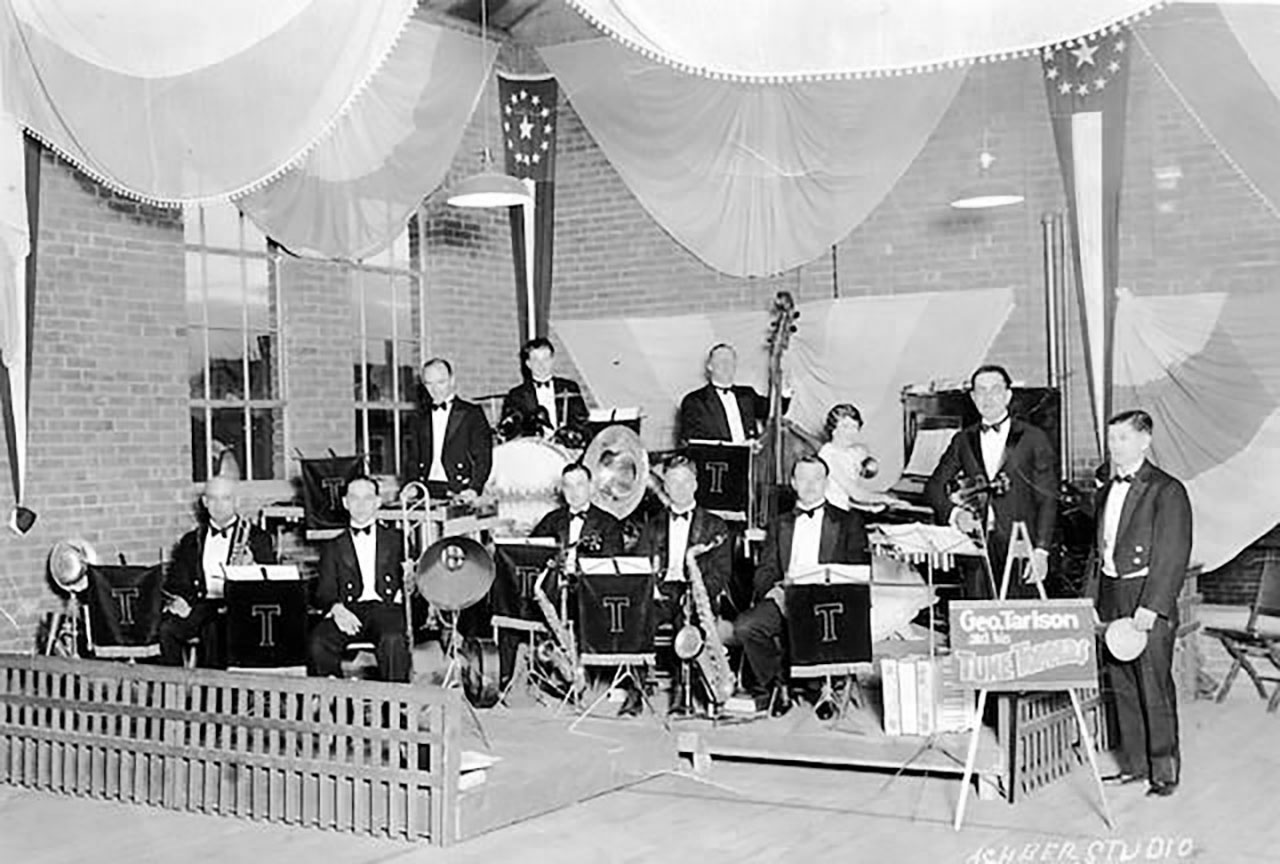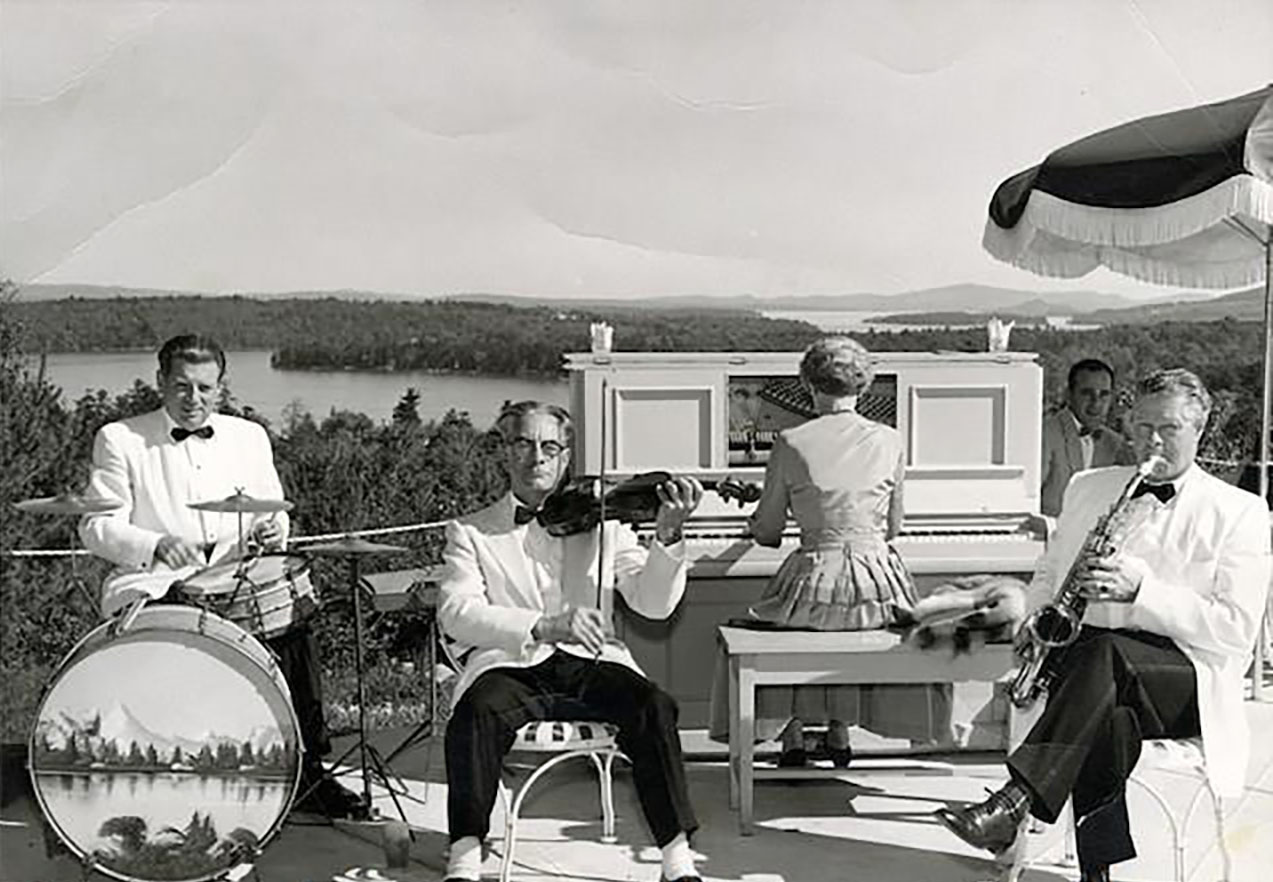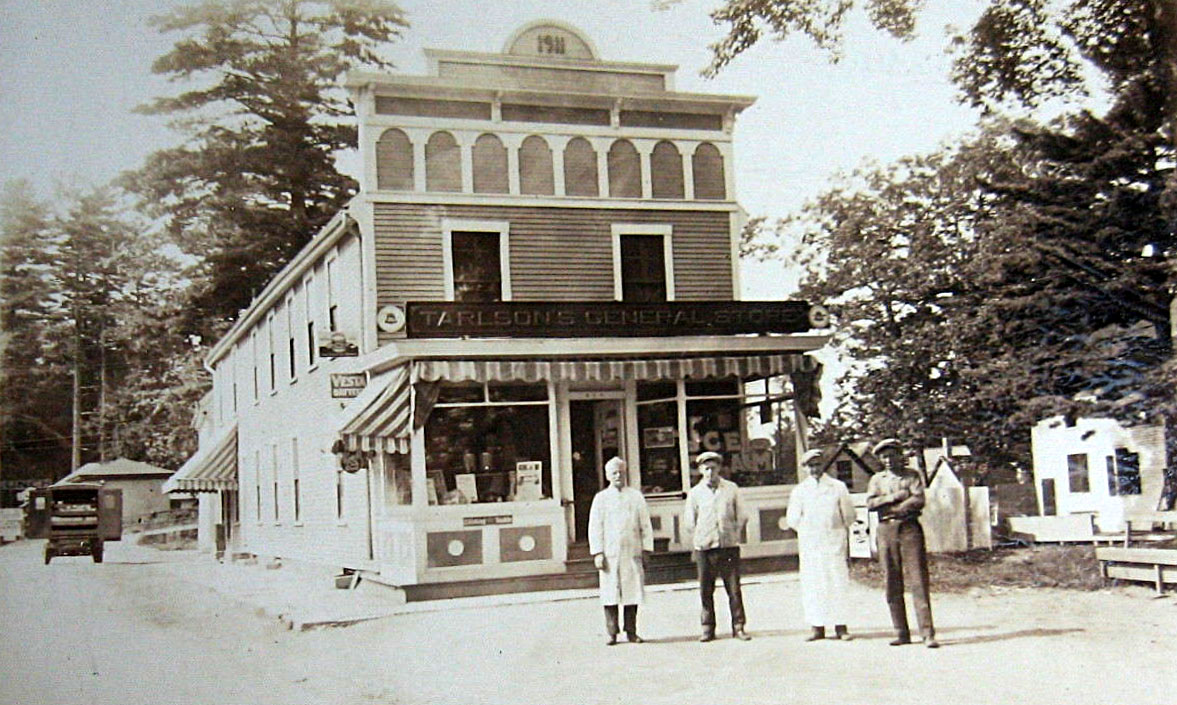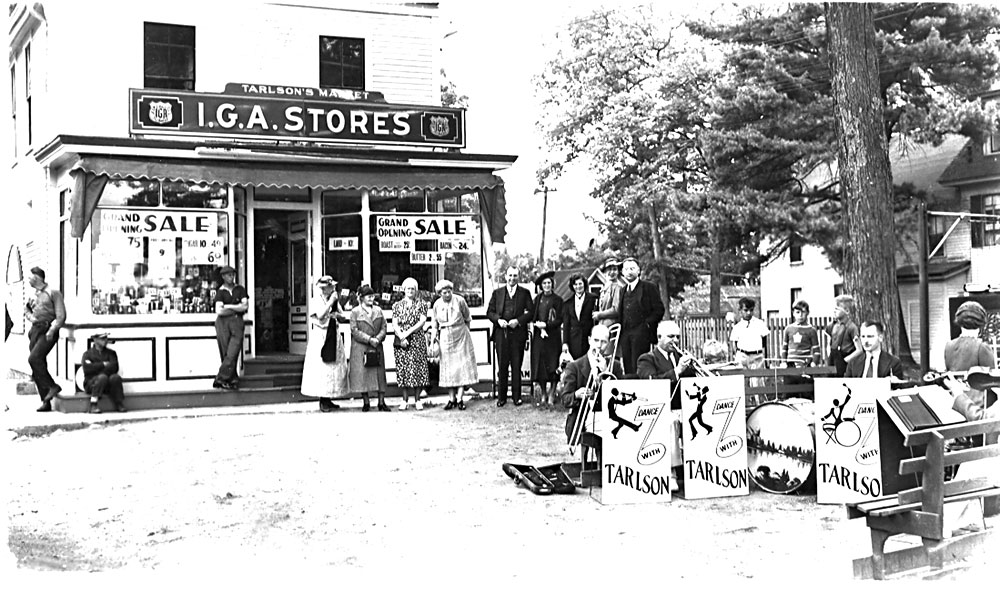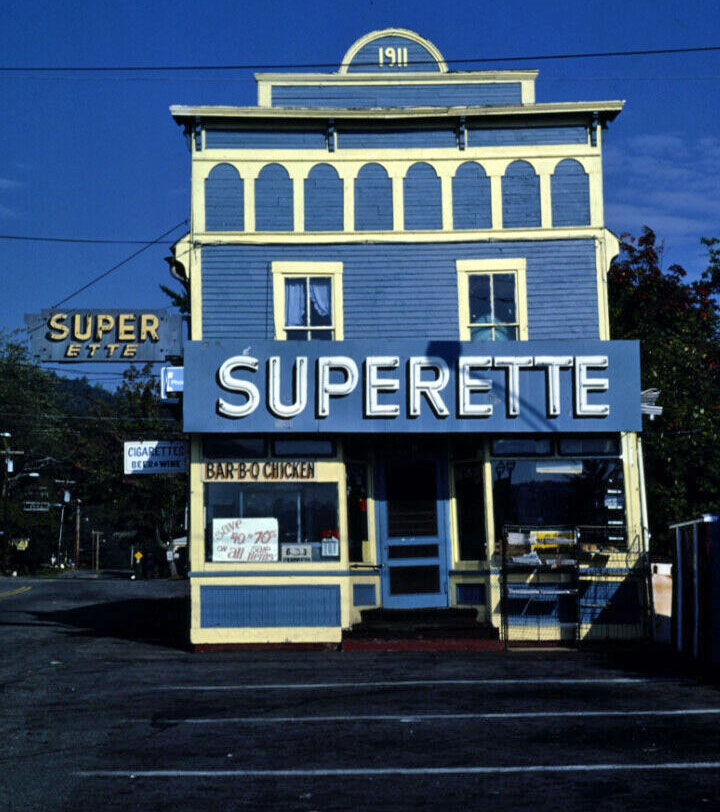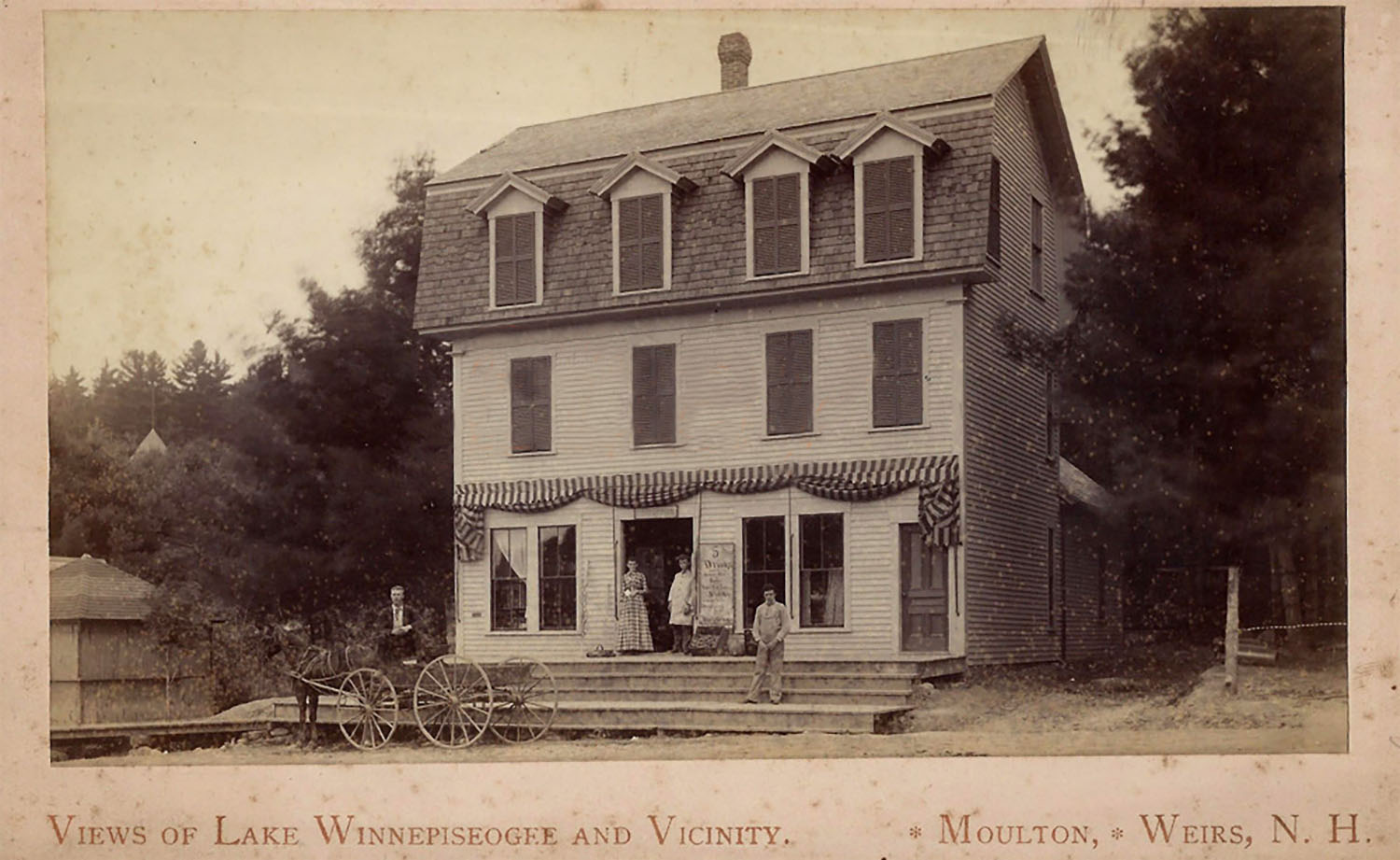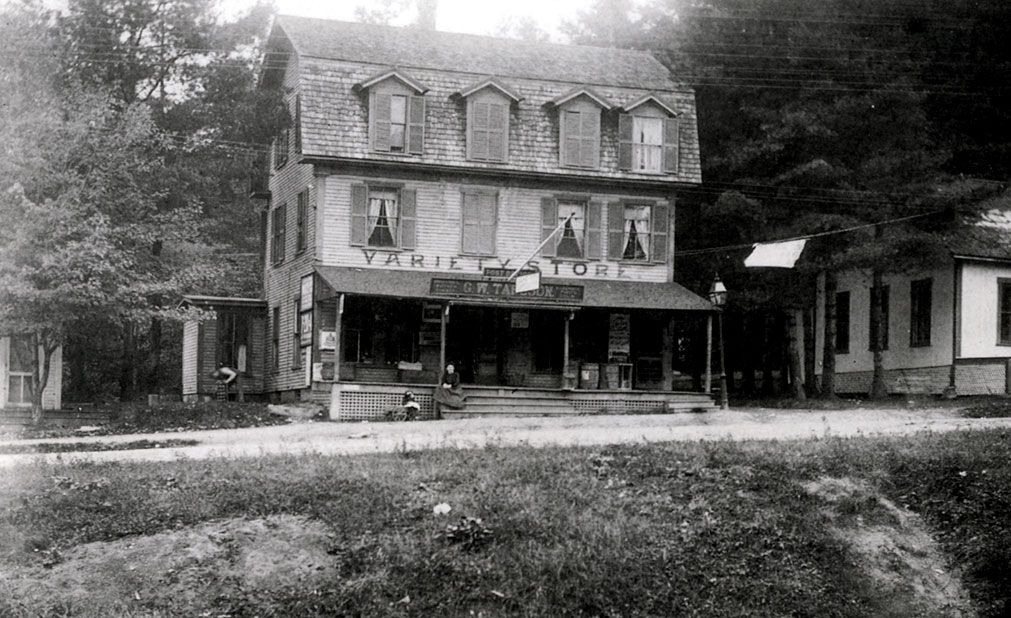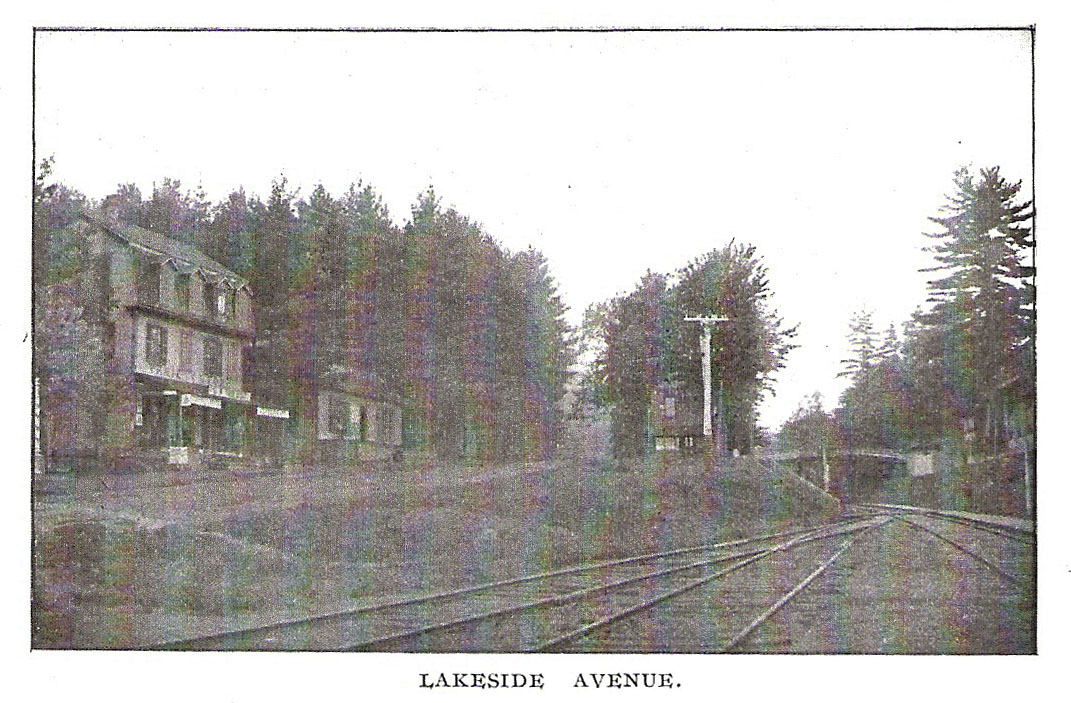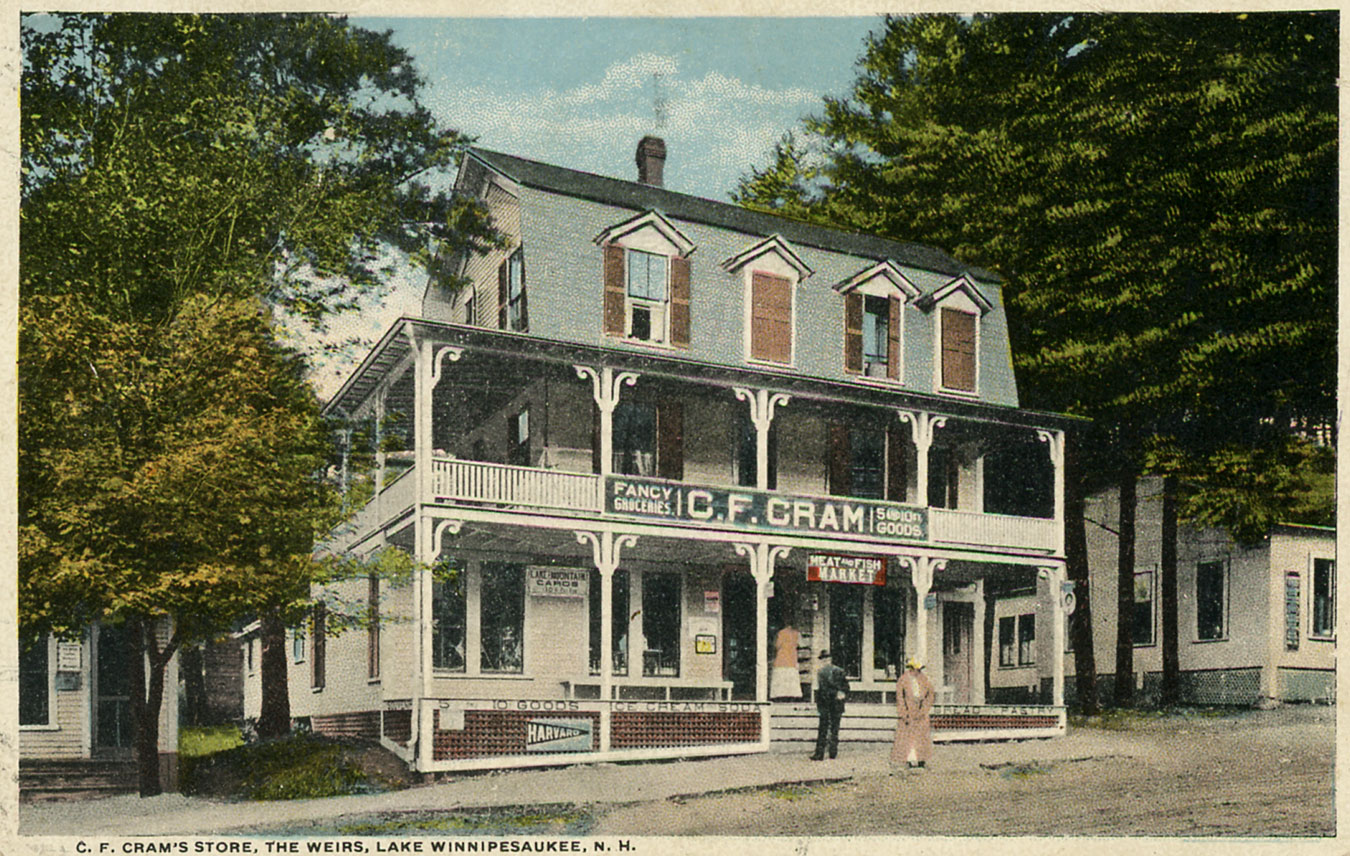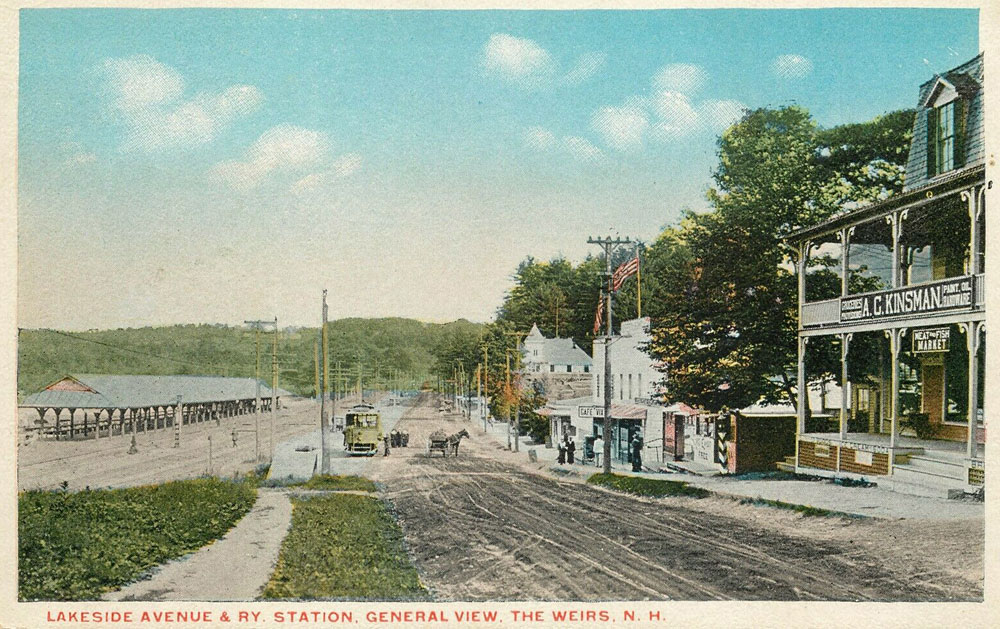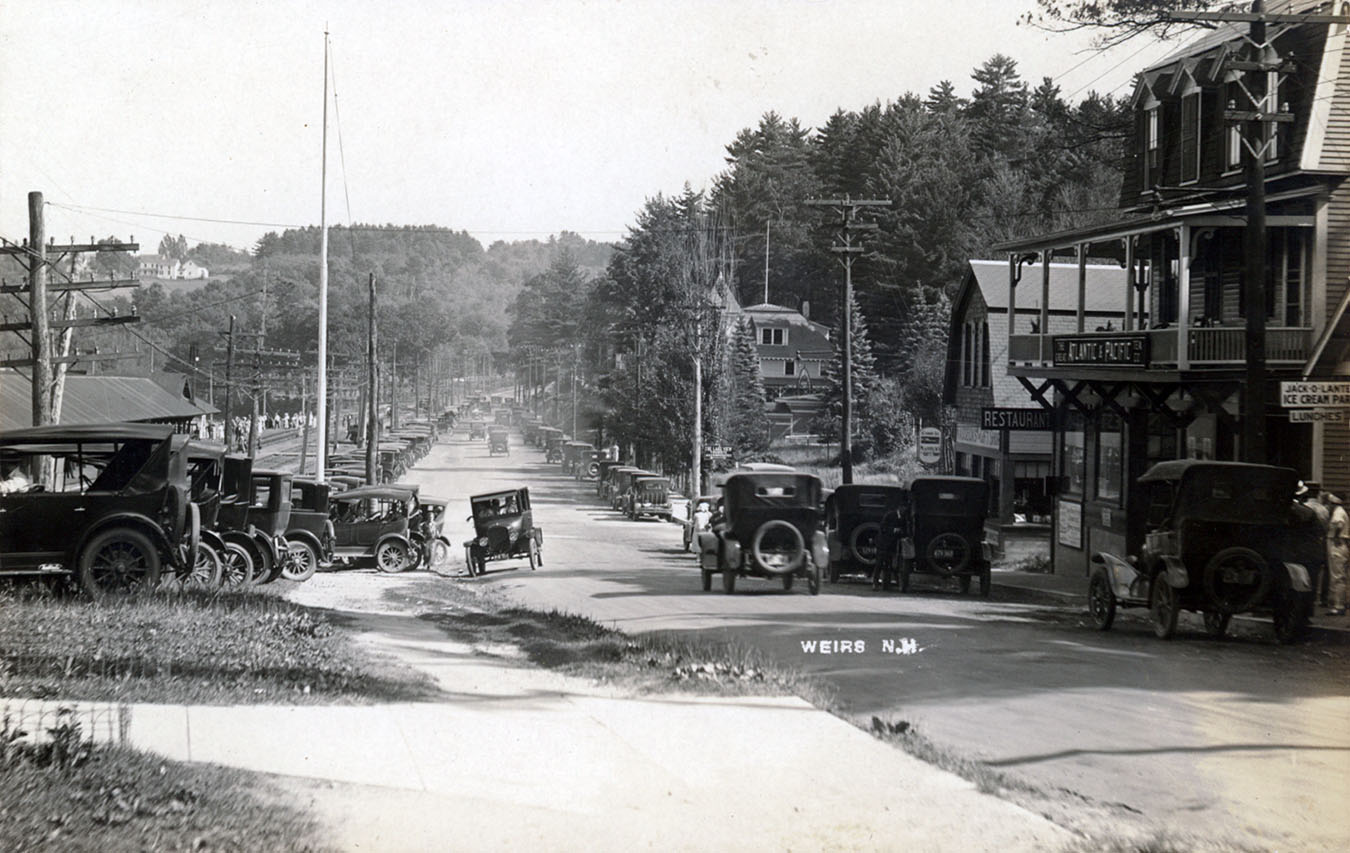Tarlson’s Arcade
Tarlson’s Arcade circa 1960. The Weirs Sports Center occupied the top floor of the building. Entrance to the Sports Center was from the rear of the building, via a footbridge from the parking lot. The Weirs Sports Center was the predecessor to Funspot. Robert Lawton, owner of Funspot, opened his arcade on the top floor of the Tarlson building on June 30, 1952. It was not until the early 1970’s that Lawton moved his arcade to its present location on Route 3. Since 2010, the building has been the Tower Hill Tavern, which has expanded into an entertainment complex with several live music stages and bars. Pinney’s Gift Shop, partly visible on the right of the photo, is now the Sidecar Sports Bar.
Tarlson’s Arcade in the early 1960s. On the left side of the street, the last sign in the distance (a green sign just past the bowling pin) was the sign for the Knotty Pine Grill. On the right, note the large sign for the Lakeside Motel, which was reached via a pedestrian footbridge, out of sight to the right. None of the businesses in this photo still exist, but the buildings are all still there, with the exception of the Knotty Pine, which burned down in 1985, and the Blue Anchor diner, which was replaced in 2004. (The diner is the building in the lower right foreground, only a small part of which can be seen.)
The Tarlson’s Arcade building was built by George Tarlson Jr., and opened on June 23, 1950, replacing “Walkden’s Souvenirs” and “Jeff’s Snack Bar”, which had previously occupied this corner at the intersection of Lakeside Avenue and Tower Street, as shown in an earlier tourist map of Weirs Beach. An article in the Laconia Evening Citizen reported that the building opened with “..seven businesses under one roof – Jeff’s Snack Bar, Grace’s Sports Shop, Lakes Region Laundry & Cleaners, Tarlson’s Arcade Store, Walkden Gift Shop (with a new name, Thunderbird), Rolfe’s Arcade and Jeff’s Milky Way Roof Garden. The new building is on the site of the old Cook’s Busy Corner.”
This 1960s photo shows the Rifle Range that was behind the Tarlson’s building. The object was to shoot out the red star using a .22 caliber short rifle and bullet. This was common in shooting galleries at fairs and carnivals until the 1970s, when the galleries switched to pneumatic guns firing reusable ball bearings (bbs). The rifle range was long gone by the time the location was paved over in the late 2010s to serve as a driveway behind the Tower Hill Tavern.
Playland Arcade
Kennon’s Restaurant
Busy Corner – Cafe Vix
Weirs Candy Kitchen
Prior to construction of the Cafe Vix/Kennon’s restaurant building, the business on this corner was a small candy shop called the Weirs Candy Kitchen. The candy shop advertised in the NHVA programs from 1907-1910. A small restaurant operated behind and uphill from the candy shop.
A circa 1905 photo of the Lakeside Ave/Tower Street corner, with the New Hotel Weirs in the background, showing the candy store. The lettering on the front of the store says “Fresh Candies Made Daily”.
The Lakeside Lunch restaurant is seen in this late 1890s postcard. The Candy Kitchen was built to the left of the Lakeside Lunch. The building to the immediate right of the restaurant housed the post office and a souvenir shop, which became Masseck’s Gift Shop from 1906-1924. On the far right of the photo is a barbershop.
Original Tower Street Corner
This what the corner of Tower Street and Lakeside Avenue looked like in the 1880s. There was nothing there.
Tarlson The Musician
In addition to his business interests, George Tarlson Jr. was a fireman (he was captain of the Weirs Hose company); and he was also a successful musician. A March, 1934 Laconia Democrat article noted that “The Weirs has no more popular young man than Mr. Tarlson”… Tarlson was Laconia’s “Paul Whiteman” (a popular musician known as the “King of Jazz”). The article continued, Tarlson was doing business “in big time fashion. He is running three Tarlson’s Tune Toppers bands.” A 1936-1937 calendar appeared on the opposite side of the business card seen below. The Tune Toppers band was a sextet featuring George on drums; his sister Hazel (Tarlson) Bridges on piano; Leo Lamere on trumpet; Harold Robinson on trombone; Philip Richardson on saxophone, and Maurice Aldrich on vocals.
When Tarlson opened his new arcade building in 1950, the Laconia Evening Citizen article noted that he “…played the musical saw and musical gloves, harkening back to his days with minstrel companies, accompanied by his sister, Mrs. Hazel Cannon, whose orchestra played for dancing.”
Tarlson’s Tune Toppers perform for the Policemen’s Ball at the Armory building (now the Laconia Community Center) in May, 1934.
Tarlson’s band is seen performing at the Shangri-La hotel on September 28, 1956. Tarlson is playing the drums, and his bass drum features artwork of the lake and mountains, just as it had in the previous photo, 22 years earlier. Tarlson’s sister Hazel, back turned to the camera, is at the upright piano. It must have been quite a task to move this instrument around! She is seen just as depicted in the business card above, a pianist with back turned. Edmond Roucher is on violin, and Bob Hough is on saxophone.
The Superette
Below, an early 1930s photo of Tarlson’s band, performing outdoors for the grand opening of his I.G.A. (Independent Grocers Alliance) store. In the photo, his Tarlson’s Market sign tops the I.G.A sign. Tarlson is on drums. A violinist (on the far right) has subbed for the sax player. Hazel, back turned to the camera, is at the piano.
Tarlson sold the I.G.A. store in 1956 to George Casana, who changed the name to the Superette (see photo), the name the store kept through 1984. In the late 1990s, the building was converted to a restaurant. It was called the Compass Cafe from circa 2010-2023. In 2024, it was renamed The Clubhouse. In 2025, it was renamed Cheers at the Weirs.
George Tarlson Jr. resided in a big house at #88 Lakeside Avenue that is now known as “Castle Rest”. His sister, Hazel (Tarlson) Cannon, lived next door at #76 Lakeside Avenue, a house known as “The Maples”. She gave piano lessons at her home for many years, including to both of the webmaster’s brothers. Hazel passed away on December 6, 1984, at age 86. Unfortunately, her beautiful, historic home was torn down in early 2023. (George Tarlson Jr. died in 1983.)
Tarlson’s Store
Tarlson’s father, George W. Tarlson Sr., had previously owned the other general store in Weirs Beach, which was just a little down Lakeside Avenue, and on the other side of the street. That store went through a variety of ownerships, seen in the photos below. George W. Weeks built the store (the 1st photo) and sold it to George W. Tarlson Sr. in 1895 (the 2nd and 3rd photos). Tarlson later sold it to C.F. Cram (4th photo), who sold it to Arthur C. Kinsman (5th photo). After Kinsman, it became part of the vast A&P grocery store chain (bottom photo). The store building burned down in the mid-to-late 1950s.
The building was replaced. In the early 1970’s, the new building housed two businesses side-by-side on the ground floor. On the left side was Charlie’s Luncheonette, and on the right, the Xanadu head shop. Around 1980, both businesses were replaced by Nothin’ Fancy, a Mexican restaurant. Around 2000, the restaurant changed its name to the Crazy Gringo. In 2024, almost reverting to its original name, the restaurant became “The Fancy”.
Right above the flag in this 2nd photo of the store, a “Post Office” sign can be seen. The store served as the Weirs Beach post office from around 1900-1920. The sign now resides in the Laconia Historical Society museum.
Below, a scene from circa 1930, when the Weeks/Tarlson/Cram/Kinsman store was part of the A&P (Atlantic & Pacific) grocery chain, as seen by the sign hanging from the second floor railing. The building now also featured a restaurant, as seen by the sign protruding from the building on the left. The restaurant was called Morse’s when it was purchased by Story’s Tavern hotel owner Alice Cawley in the 1930s. The restaurant was renamed Lakehaven, and sold to Charles Cattas in 1945, who retained not only the name, but Mrs. Cawley herself as a cook, until at least 1950. After the building burnt down in the late 1950s and was rebuilt, Mr. Cattas renamed the restaurant after himself, calling it “Charlie’s Luncheonette”.










